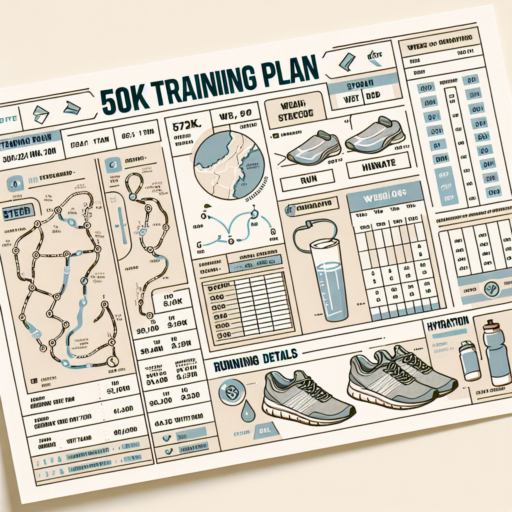How to train for a 20km trail?
Training for a 20km trail is an exhilarating challenge that requires a strategic approach to conditioning, endurance building, and technique improvement. It’s not just about logging miles, but about preparing your body and mind to adapt to the unpredictable terrain and distance of a trail run.
Developing a Solid Base
Before you ramp up your mileage, it’s crucial to establish a solid running base. This means gradually increasing your weekly running distance over a period of several weeks, focusing on slow, steady runs to boost your cardiovascular fitness. Incorporating strength training exercises, especially for your core and leg muscles, will also help in improving your stability and reducing the risk of injuries.
Incorporating Hill Workouts and Technical Terrain
Hill workouts are a cornerstone of trail running training, as they simulate the ups and downs typical of trail routes. By integrating both uphill and downhill repeats into your training regime, you can enhance your leg strength and work on your running economy. Additionally, seek out technical trails for some of your runs to get accustomed to the uneven surfaces you’ll encounter during the race. Practicing on rocks, roots, and other obstacles will improve your footwork and confidence on challenging terrains.
Long Distance Runs and Recovery
Gradually increasing the length of your long runs is critical for building the endurance needed for a 20km trail. These runs should be done at a slow, conversational pace, focusing on time on your feet rather than speed. Equally important is incorporating proper recovery strategies, including nutrition, hydration, and rest, to allow your body to heal and grow stronger. Remember, the goal is to reach the starting line of your 20km trail race feeling prepared and injury-free.
How to train for a marathon hike?
Training for a marathon hike involves a mix of physical preparation, mental stamina building, and logistical planning. To ensure you are fully ready for the challenge, it’s important to adopt a holistic approach. Embracing a diverse training routine that gradually increases in intensity can help your body adjust to the long distances you’ll be facing.
Develop a Consistent Walking Schedule
Start by establishing a regular walking schedule that mimics the marathon’s demands as closely as possible. Begin with shorter distances and gradually increase the length of your walks. Incorporating varied terrain and elevation changes will simulate the conditions you’ll encounter during the hike. Consistency is key; aim to walk four to five times a week, allowing your body to adapt and grow stronger.
Include Cross-Training in Your Routine
While walking should be at the core of your training, integrating cross-training activities can greatly enhance your stamina and reduce the risk of injury. Activities such as cycling, swimming, or strength training not only improve cardiovascular health but also build the muscle groups used in hiking. Pay particular attention to strengthening your leg muscles and core, as these will be crucial in enduring the marathon hike.
No se han encontrado productos.
Can you train for a 50k in 2 months?
Training for a 50k ultra-marathon in just two months is a formidable challenge that requires a well-structured plan and a strong base of running endurance. Before embarking on such a rigorous training schedule, it’s essential to have a solid foundation of running, ideally being comfortable with running at least 20-30 kilometers per week. Without this, the risk of injury and burnout increases significantly.
The key to success in this short timeframe lies in increasing your weekly mileage gradually, focusing on both endurance and recovery. Incorporating long runs, tempo runs, and interval training can help build the necessary stamina and speed. However, equally important is prioritizing rest and recovery days to allow your body to adapt and recover from the increased demands of training.
While it’s possible to train for a 50k in 2 months, the approach should be personalized based on your current fitness level, running history, and overall health. Consulting with a running coach or a fitness expert can provide valuable insights and adjustments to your training plan, ensuring it aligns with your capabilities and goals. Remember, the ultimate aim is not just to finish the race but to do so in a way that is safe and enjoyable.
How to train for a 25km trail run?
Training for a 25km trail run is a challenging yet rewarding endeavor that requires a well-rounded preparation strategy. The uneven terrains, elevation gains, and natural obstacles found in trail running demand a specialized approach to training. Here, we’ll delve into the essential aspects of getting ready for such an adventurous race.
Building Your Foundation
Before you tackle the specifics of trail running, establishing a solid aerobic base is crucial. Start with consistent long-distance runs on roads or flat trails, gradually increasing your mileage each week. Incorporate strength training sessions to build muscle endurance and resilience, focusing on your legs, core, and upper body. This foundational phase is essential for preparing your body for the more rigorous trail-specific training to follow.
Trail-Specific Training Techniques
Once your endurance base is established, shift your focus to trail-specific sessions. This includes hill repeats to improve strength and power on climbs, as well as technical drills for navigating descents safely and efficiently. Practice running on mixed terrains to adapt to shifting surfaces, and don’t shy away from incorporating speed work into your training. Interval training or tempo runs can significantly enhance your aerobic capacity and running economy, crucial factors in completing a 25km trail run successfully.
Remember, the key to a successful 25km trail run lies in a balanced approach that includes endurance training, strength building, and technical skill development. Embrace the process, and you’ll find yourself crossing the finish line with a new sense of accomplishment.




